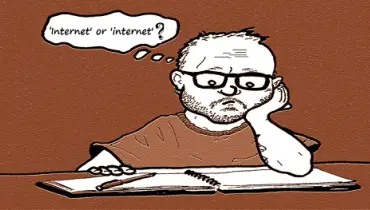3 Mistakes that Kill Your Visual Content Marketing Strategy

We've written at length in the past about how visual communication is one of the most powerful techniques that marketers in the modern era have available to them. This is still as true today as it ever was.
But, it's critical to understand that this is only true if you're using those visuals in the right way to begin with.
There are several key mistakes that you could make that will harm your efforts before they've even truly had a chance to get off the ground.
Visual Communication Mistakes to Avoid
Avoid these visual content marketing mistakes; these are the types of visual communication issues that you would do well to avoid at all costs.
1. You're still not letting the pictures do the talking
The old saying that "a picture is worth 1000 words" is a lot more literal than most people realize.
Visual communication can and should become one of the cornerstones of your content marketing... but you need to use it to tighten up your message, not allow it to expand past its point of expiration.
If you're writing a 1500 word blog post and then adding visuals on top of it, you're not leaning into the brevity-related benefits that visuals bring with them. Your content is still too long and the vast majority of your audience will still likely never reach the end of it. Instead, think about what parts of your content can be told entirely in visuals.
Take that same 1500 word blog post and pare it down to 700 words by letting visuals exclusively tell huge chunks of the story as it unfolds. Take those paragraphs of data analysis and use a graph maker to represent them quickly and succinctly in a visual way, instead. Use a flow chart creator like Visme (which I founded) to express that portion of your story in images better than words ever could on their own.
Don't just create a piece of content and then "sprinkle" visuals on top of it. That in and of itself is not enough to get the job done.
2. You're not consistent
Equally important to your long-term success is your ability to both use visuals and remain consistent. In other words, it's not about using just any visual items. It's about using the right visual collateral for the right audience at exactly the right time.
To put it another way, every piece of visual content you create needs to feel like it's coming from the exact same place. People need to be able to look at something and tell that it came from your brand - even if they're comparing a blog post to a presentation to a picture essay or video.
If you're just throwing out any and all visuals that you can find, you may experience a slight bump... but it's definitely going to cause brand confusion. The larger ideas behind your business will get muddier and harder to identify and your long-term efforts will absolutely suffer as a result.
3. You're not letting the message dictate the format
Finally, you need to let the message you're trying to convey dictate the decisions you're making with regards to visual communication. It should never, under any circumstances, be the other way around.
Let's say you've come up with an idea you think is perfect for an Infographic. You sit down with an Infographic maker and get started. However, as you continue to work, you have a hard time wrapping that Infographic around that format. The finished product has far too much text and it isn't as easy to read as you'd like. Maybe you even went as far as publishing it and had your worst fears confirmed: it landed on the Internet with a hollow thud. Nobody cared.
This doesn't mean you've done anything "wrong", necessarily - it's just that your idea was too big for an Infographic. Maybe it needed to be a presentation with a heavier mixture of text and pictures instead.
Don't start with an idea for a finished product and then try to work your way back to a message. Figure out exactly what your audience needs to hear and then let that influence all of the choices you make from that point on.
Sometimes that blog post can be an Infographic instead - it doesn't actually matter. The point is if you put the time in and pair the right message up with the right format, it's going to land with your audience in all of the ways that you needed. At that point, the only thing left to do is do it all again tomorrow.




















